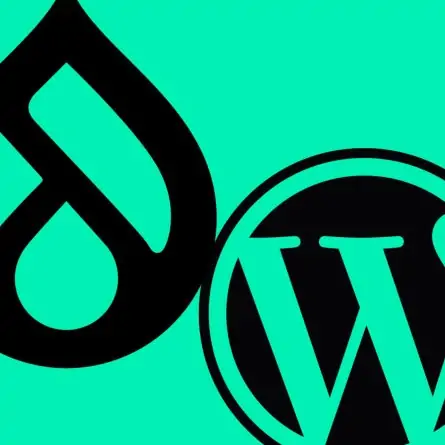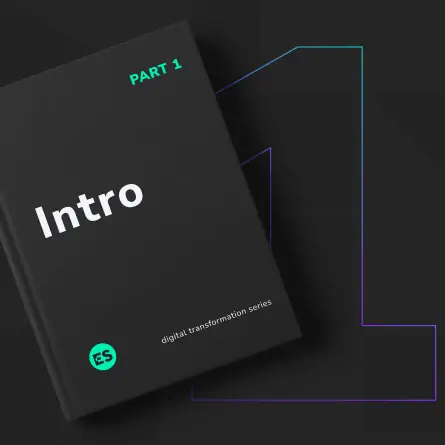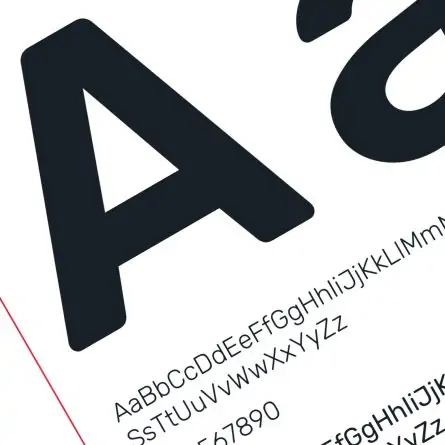Drupal to WordPress or Vice Versa: What to Do When It’s Time to Migrate
Does your website currently reside on a Drupal core that is nearing its end of life deadline or a WordPress platform that doesn’t feel quite like the right fit?
If you’re under the impression that the grass would be greener on another CMS, here are a few issues to consider before making a move toward migration.
Our team is well versed in working in both WordPress and Drupal, and we find both to be compelling tools. While many sites could be served well by either platform, we often work with clients who are ready to make the switch.
If you’re still trying to decide which platform is right for you, we’ve created a separate post dedicated to choosing WordPress vs Drupal. But If you’re ready to change platforms and want to know what you’re in for, we’ve outlined some important factors to consider before you begin:
What to Expect With Any Migration
While the technical difficulty of migrating from Drupal to WordPress, or vice versa, depends on the size and complexity of your existing site, there are some steps you can take and questions you can answer to facilitate a smooth transition and avoid any surprises.
Answer the Question: Is the Platform Really the Problem?
It’s easy to blame the underlying CMS for whatever woes you’re facing with your website. However, we often find that the platform itself isn’t the root of the problem. If the site’s goals, audiences, and content strategy are unclear, the CMS won’t help you. Before you consider a platform switch, take an honest look at what the website is supposed to accomplish, who its intended audiences are, and how you define “success” when it comes to your digital efforts.
Perform a Thorough Content Audit
It’s easy to underestimate just how much content is on your site. Maybe you’ve got news items dating back a decade, or PDF documents that have been uploaded weekly for just as long. Use a site crawler that can extract a complete view of what’s actually on the site; otherwise, you’ll be flying blind and you’ll have to scramble later to account for all of the content and files buried within the site.
Make sure key stakeholders have a realistic expectation about what the migration will accomplish, and what it will not.
If you’re taking the site design and content and moving it to a new CMS, it’s important to set expectations that the site will not look very different to end users. Determine whether other upgrades need to be considered as part of the project in order to meet the expectations of your project stakeholders. Talk internally and communicate your wants and needs to the development team on the project to find out the best way to realize them.
Keep in mind that attempting to tackle too much at one time could lead to logistical and budgetary headaches, and your site may be better served by adopting a continuous improvement plan that addresses incremental changes over time.
Plan an appropriate budget
The cost associated with a website migration depends largely on the overall page count and complexity of your site. Make sure you have a good understanding of any fixed and contingency costs.
Set a realistic schedule
Ensure that your team is on board with the time and effort it will take to make your migration a success. Plan ahead for site down time and critical milestones that must be met by each team member throughout the process. While smaller site migrations might be completed in under 40 hours, larger sites with more complex content, design, and functionality requirements could take 2–3 times as long. When you factor in layers of testing and rounds of required approvals, your project may take up to a few months or longer, in some cases
Address potential impacts to your SEO
Proper planning, with the help of your development team, will ensure a steady flow of traffic after the transition and help you avoid related hits to your digital revenue stream. Remember the content audit you did in the planning phase? If URLs have changed, make sure you note what the new URL is and set up a 301 redirect in the new system. Otherwise, you’ll essentially disappear from Google for a while.
Plan for manual effort
Rarely does anyone escape a site migration without having to do some of the migration manually. Even if content is migrated by way of an automated import, the following types of entities often don’t migrate cleanly and need someone to manually recreate them:
- Menu items
- Forms
- User accounts
- Permissions and roles
- Image crops and metadata
Drupal and WordPress: How to Get the Same Functionality Out of Your Migrated Site
Below is a list that shows which WordPress plugin provides the same functionality as the relevant Drupal module. This is not an exhaustive list, but it should cover many of the typical use cases you’re likely to encounter.
| Feature | WordPress Plugin | Drupal Module |
|---|---|---|
| Advanced Roles + Permissions | Members Nav Menu Roles | (Built in) |
| Component-Based Layouts | Advanced Custom Fields | Paragraphs |
| Media Management | (Built in) | Media Library (Built in) |
| Image Cropping | (Built in) | Image Widget Crop |
| Content Lists and Grids | Content Views | Views (built in) |
| Editorial Workflow | Publishpress | Workbench (built in) Workbench Access |
| SEO | Yoast | SEO Checklist |
| Forms | Gravity Forms | Webform |
It’s important to keep in mind that a migration is a fairly major undertaking that should be considered carefully first from all angles. The best reason to proceed is when a migration will improve the user experience in a meaningful way to better meet the expectations of viewers and the needs of your organization and internal team. The old adage definitely applies: If it ain’t broke, don’t fix it.
Free Migration Estimate
We’ve helped dozens of happy clients select the best CMS for their needs, migrate and improve content to a new CMS, and get their teams ready to maintain and edit content on the site.
Start a conversation with to see how we can help you.
Q&A
Is the CMS platform really the problem with my website?
Often the platform itself isn’t the root of the problem. If your site’s goals, audiences, and content strategy are unclear, the CMS won’t help you. Before considering a platform switch, take an honest look at what the website should accomplish, who its intended audiences are, and how you define success.
What preparation is needed before migrating between WordPress and Drupal?
Perform a thorough content audit using a site crawler to extract a complete view of all content including old news items and PDF documents. Set realistic expectations with stakeholders about what the migration will accomplish. Plan appropriate budget based on page count and complexity, and set a realistic schedule.
How long does a CMS migration typically take?
Smaller site migrations might complete in under 40 hours, but larger sites with complex content, design, and functionality requirements could take 2-3 times as long. When you factor in testing layers and approval rounds, projects may take up to a few months or longer.
What typically requires manual effort during CMS migration?
Even with automated import, certain entities often don’t migrate cleanly and need manual recreation including menu items, forms, user accounts, permissions and roles, and image crops with metadata. URL changes also require manual 301 redirect setup to avoid SEO impacts.
Eastern Standard delivers expert WordPress development and design services. Our website development team builds custom WordPress solutions for enterprise organizations. Contact us about your WordPress project.



